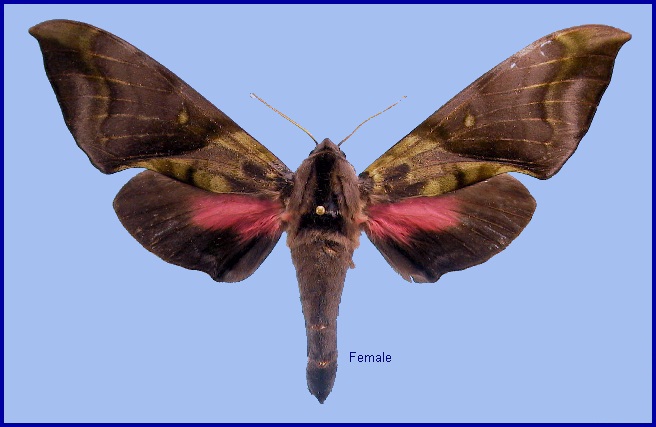
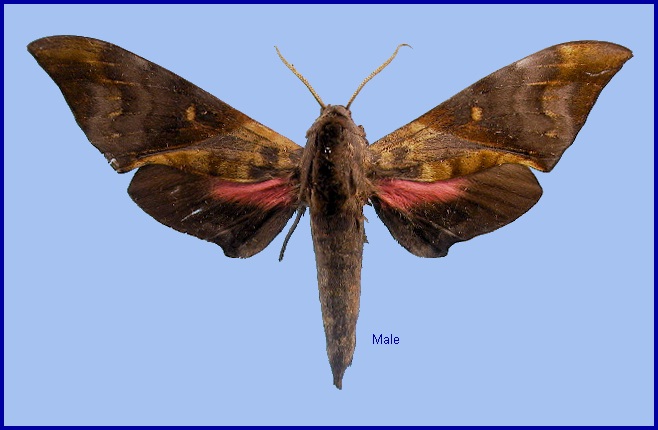
Ambulyx elwesi Druce, 1882, Entomologist's mon. Mag. 19: 17. Type locality: [India, West Bengal,] Darjiling [Darjeeling].
Synonym. Ambulyx elwesi Druce, 1882.
Wingspan: 100mm. Superficially similar to a very dark Callambulyx rubricosa rubricosa but differing markedly in genital and other morphology. Frenulum present but reduced in length; retinaculum absent. Subapical pair of hindtibial spurs absent. Forewing upperside with distal two-thirds dark and proximal one-third green (turning brown in a humid atmosphere) and much paler. Hindwing upperside with deep pink basal area and a dark, almost black distal two-thirds in which a narrow lunate purple patch is discernible.
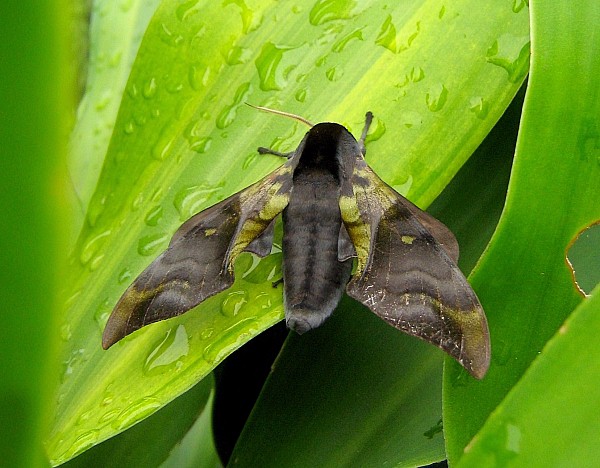
In Nepal at 2000-2500m altitude in oak-laurel forest (M. C. Allen, pers. obs. 1991).
In Thailand, May to July at 700-1000m altitude. Mid June in Nepal (M. C. Allen, pers. obs. 1991).
OVUM: Pale green, becoming greyish-white prior to hatching; oval (1.4 x 1.6mm), shiny and smooth. Similar to those of Smerinthus ocellata (Linnaeus, 1758).
LARVA: Often goes through six instars.
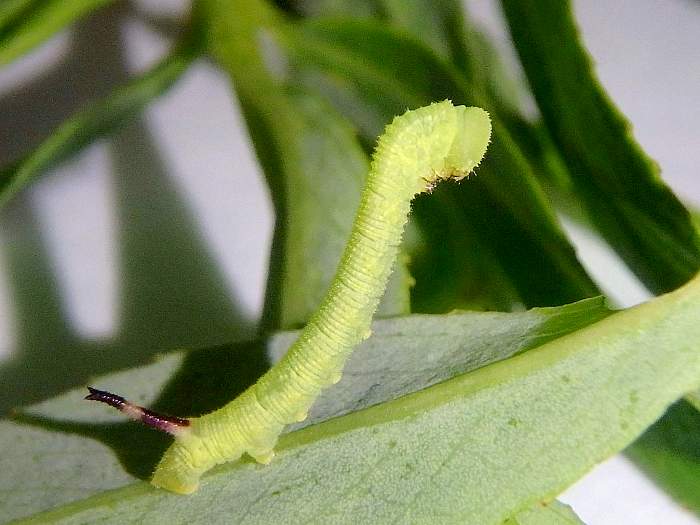
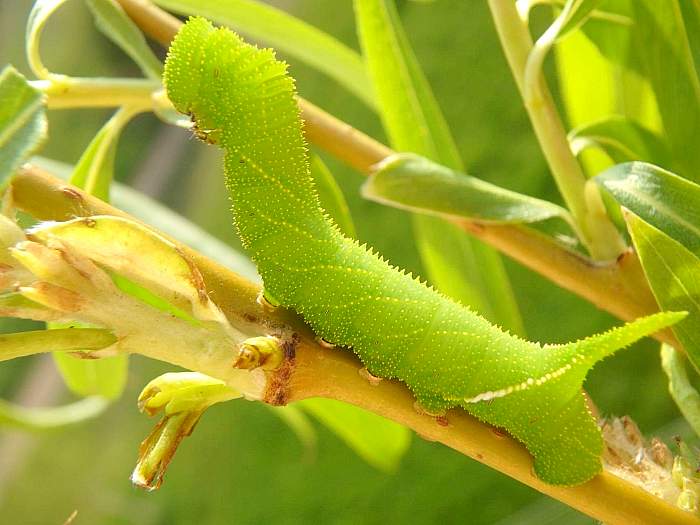
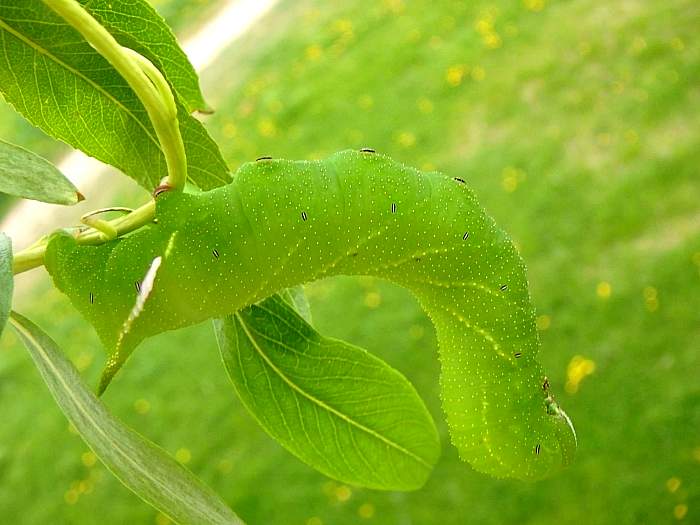
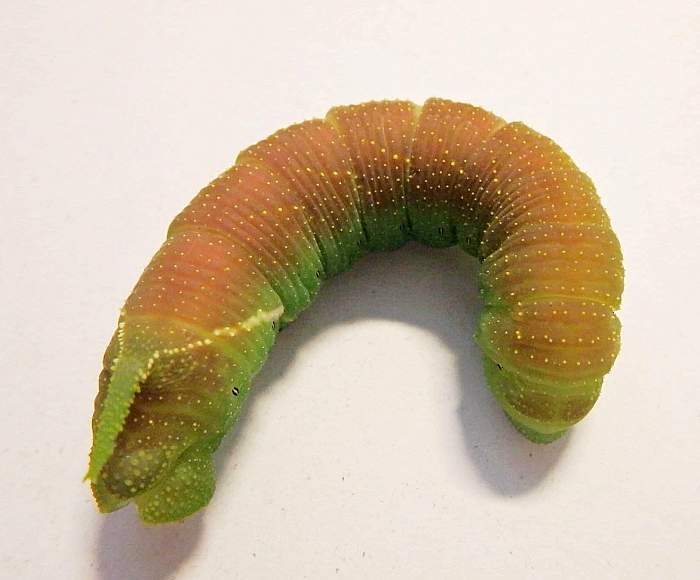
PUPA: 35--41mm. Rich, glossy blackish brown; smooth (without granulations). Thickset, anteriorly blunted and tapering posteriorly. Very similar to those of Smerinthus ocellata.
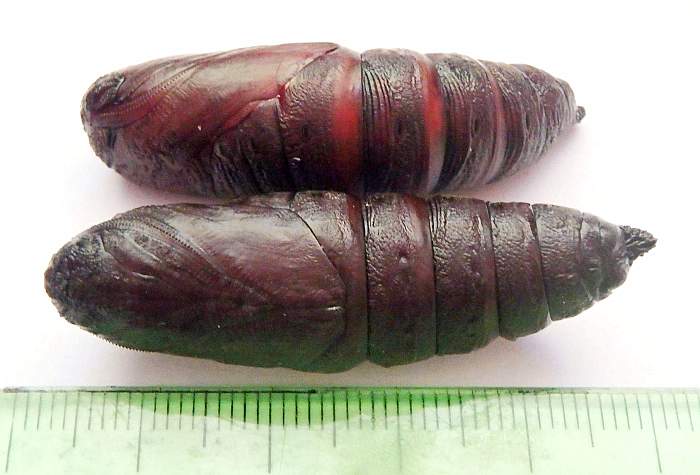
Larval hostplants. Unknown in the wild, but reared in captivity on Salix (Tomáš Melichar, pers. comm. 2017) and Populus. Therefore, probably feeds on a tropical member of the now APG IV (Angiosperm Phylogeny Group IV) reclassified Salicaceae.
Unknown.
China: Yunnan (Xishuangbanna, Mengla); Hainan (Qichacun; Maonaocun; Wuzhishan National Nature Reserve).
Northern Pakistan (Rafi et al., 2014), northern India (Smetacek, 2004b), Nepal, Bhutan (Irungbam & Irungbam, 2019), southwestern China, Burma/Myanmar, northern Thailand, northern Laos and central Vietnam (Le & Vu, 2024).

 Return to Sphingidae of the Eastern Palaearctic species list
Return to Sphingidae of the Eastern Palaearctic species list